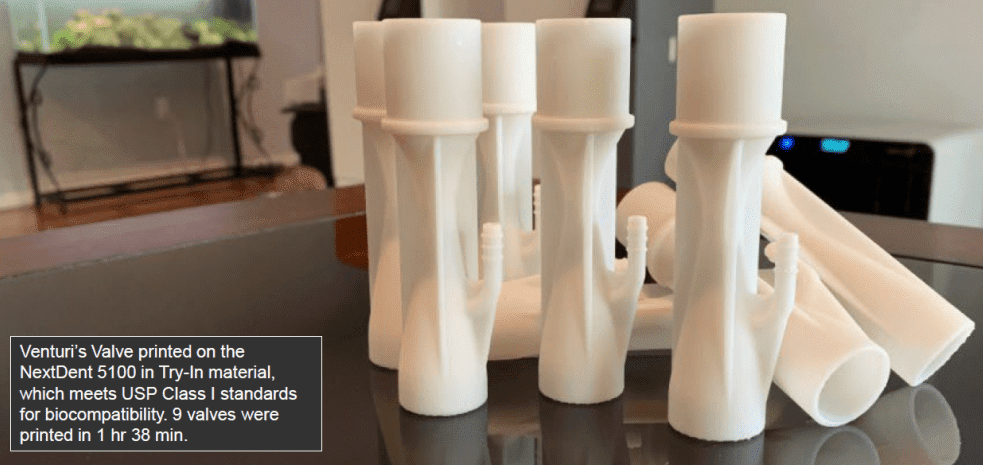Rapid Application Group is a 3D printing service bureau based in Tulsa in Oklahoma, USA. They have been using 3D Systems SLS 3D printers to print urgently needed parts for the fight against COVID-19 like face shields and masks. These parts are printed using our Duraform PA 12 material which is capable of meeting ISO 10993-5 & 10993-10 standards for biocompatibility (cytotoxicity, sensitization and irritation). With a Heat Deflection Temperature (HDT) of 180 degrees Centigrade, parts can be sterilized using autoclave. For those who aren’t aware, an autoclave is a machine that uses steam under pressure to kill harmful bacteria, viruses, fungi and spores on items that are placed inside a pressure vessel.
The reason I’m explaining this in detail is because I see a lot of well-meaning people with 3D printers eager to help in the fight against COVID-19. That is very heartening. However, we need to be responsible to print medical parts using the right technology and material depending on the intended application of the part. We need to realize that if a hospital is using a 3D printed part instead of a part made using a traditional method in a certified facility using a certified process, it means that they are desperate to do something to keep a very sick patient alive. They have obviously run out of their regular supplies or venturi valves for ventilators or face marks and shields and now the doctors need to take some very critical life and death decisions. These 3D printed parts are going to be used on a very sick person or by a healthcare worker who has run out of options.
To drive my point in, at 3D Systems we offer more than 130 materials across our six 3D printing technologies. But we recommend only a small handful of them for medical applications like parts for COVID-19 applications. For example, take a ventilator splitter which is used to serve more than one patient on a single ventilator. It is very important for the inner surface of the splitter to have a smooth surface finish, similar to the kind you will get from an injection molded part. This is because a rough surface will not only mess with the air flow, but more importantly it will become a breeding ground for growth of bacteria. So if you use a 3D printing technology which doesn’t yield a smooth surface finish then you may end up causing a bigger problem than you are trying to solve. A patient put on the ventilator could develop a secondary infection due to the bacteria in the splitter.
This is a very good reason why medical devices are put through a very stringent qualification and certification process. It takes months and sometimes years to certify medical devices. So my request to people with 3D printers eager to help in emergency situations like the one we have now is to take some time out and do some due diligence on the 3D printing technology that your printer uses. Get a deeper understanding of the material that your printer uses. Learn more about the best practices that you need to follow when post processing the parts that your printer has printed.
As an important step in becoming a doctor, medical students must take the Hippocratic Oath. One of the promises within that oath is “First, do no harm” (or “primum non nocere”, Latin translation from the original Greek). As the 3D printing community joins the fight against COVID-19 let us all take an oath to ‘First, do no harm’.
Follow Deelip’s blog on a taking a precautionary approach while 3D Printing medical equipment, here.



